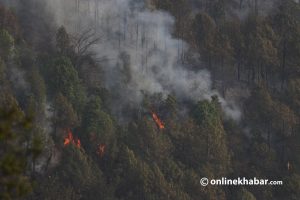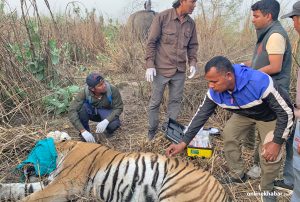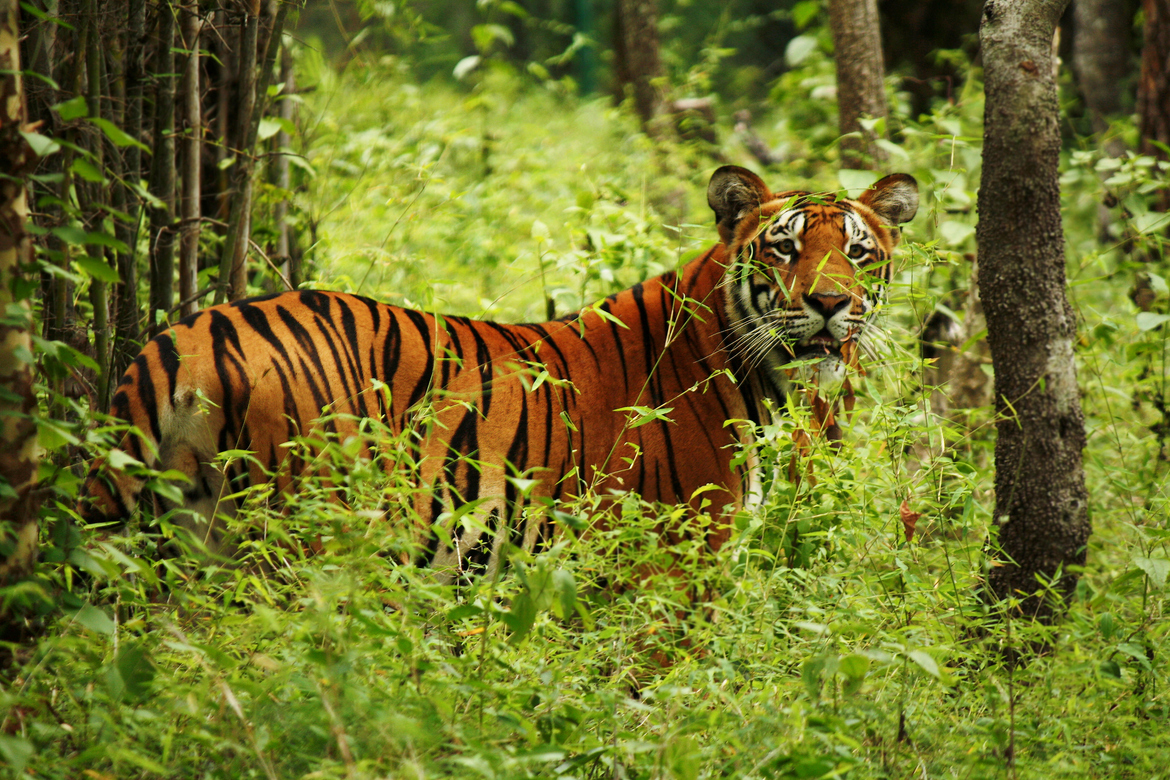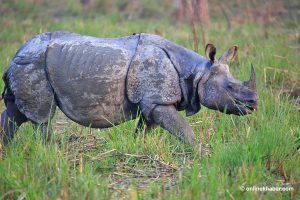
Nepal’s pioneering landscape-level ecosystem restoration initiative, aimed at creating dispersal space for tigers, has been globally recognised for its efforts to fight and reverse ecosystem degradation. Yet sustaining the success is rife with hurdles such as infrastructure development, human-wildlife conflict, political instability and climate change uncertainties, experts caution.
Launched in 2004, the Terai Arc Landscape (TAL) initiative, which led to the restoration of 66,800 hectares (165,000 acres) of forest and nearly tripling of the endangered Bengal tiger population, has been honoured as one of seven U.N. World Restoration Flagships by the U.N. Decade on Ecosystem Restoration (2021-30) program jointly led by the U.N. Environment Program (UNEP) and the Food and Agriculture Organization.
“We are glad to receive the recognition from the U.N. as one of the seven best examples of ecosystem restoration around the world,” said Dipak Gyawali, deputy director-general of the Department of Forest and Soil Conservation.
“The landscape is important, as it connects different ecologically critical protected areas, not just in Nepal, but also in India,” he said.
The Nepal portion of the TAL spans from the Bagmati River in the east to the Mahakali River in the west, covering an area of 24,710 square kilometres (9,540 square miles). It is home to a variety of wild animals such as tigers, elephants, rhinoceros, gharials, hispid hares, sloth bears and river dolphins, as well as more than 500 species of birds, many of them endangered.
TAL for tigers

When it was conceptualised two decades ago, TAL’s aim was to allow space for the movement of tigers over a larger landscape, beyond source populations within protected areas. It also represented a shift from a protected-area-based conservation approach to a broader one transcending the boundaries of not just protected areas but also the two countries. As the strategy took a bigger shape, the socioeconomic well-being of the people, which was linked to tourism and access to resources, also became a priority.
“In addition to restoring the forests, the TAL initiative also helped restore important transboundary corridors between India and Nepal through community-based forest conservation for the movement of wild animals such as tigers and rhinos,” said Gyawali. By promoting homestays and local tourism, the program aimed to deliver direct benefits of conservation to the people, he added.
With the U.N. recognition, the whole of the Terai Arc Landscape will now be eligible for technical and financial support to further restore an area of almost 350,000 hectares (865,000 acres) in both Nepal and India.
Despite the successes in restoring forests, the TAL still faces a host of challenges, conservationists and researchers say. Chief among the obstacles are people’s aspirations for better infrastructure, negative human-wildlife interactions and a lack of clear government policies, they say. In addition, climate change amplifies these challenges, says conservationist and researcher Babu Ram Lamichhane.
The length and number of roads, highways and transmission lines have always been considered signs of development in Nepal. “Most of the periodic plans in Nepal have focused on improving connectivity and transportation,” said Shant Raj Jnawali, senior adviser for biodiversity conservation, at WWF Nepal. For example, the total length of strategic roads in Nepal stood at 4,740 km in 1998. The number had jumped to 13,447 km by 2017-18.
Nepal had more than 5,300 km of high-voltage transmission lines by 2021-22, according to the Nepal Electricity Authority, the country’s state-owned power monopoly. That is a “drastic increase” of 2,700 km over the past seven years, the utility said, with another 3,100 km of lines in the works across the country.
Most of the roads and transmission lines aren’t designed to be wildlife friendly.
“Linear infrastructure such as roads, canals, railways, canals and transmission lines pose a major threat to biodiversity, as they not only increase the chances of vehicular collisions and electrocution, but also fragmentation of habitats,” said Jnawali. “Then there is also the question of the proposed Nijgadh Airport.”
The other issue is related to human-wildlife conflict and ensuring that not just communities, but households, benefit from conservation, said the forest department’s Gyawali.
“Most of the programs such as community forestry and homestays are run by groups of people that retain their earnings, and the money doesn’t reach individual households,” he said, adding that for people to feel ownership of conservation, the money needs to reach their pockets.
Cost of conservation

According to the Department of National Parks and Wildlife Conservation, more than half of the compensation claims disbursed for damages by wildlife go to communities living near protected areas in the TAL. In 2022-23, nearly 17% of the Rs 135.4 million (USD 1 million) in disbursements went to communities in Chitwan alone. But communities say the compensation process is too bureaucratic and time-consuming and the amount too miniscule.
“As we move forward, this challenge will also grow as the number of wild animals as well as people will increase,” said Bed Kumar Dhakal, deputy director-general at the Department of National Parks and Wildlife Conservation. “We will need policy measures to address that.”
Several political and policy-level changes are also likely to impact the TAL. For example, the recent legal changes to allow hydropower developers to build plants entirely inside protected areas, and the government’s announcement to provide forest land to squatters and landless people, also raise concerns, conservationists say.
“The award is definitely an encouragement for people involved in TAL,” said Lamichhane. “However, we must not be complacent,” he cautioned. He added that although transboundary connectivity has improved, movement of animals within Nepal has not. “The Chure hill range adjoining the TAL plays an important role in that context,” he said, adding that the area should receive more attention if TAL is to become sustainable.
Jnawali said that although things look bleak in terms of linear infrastructure, it’s a big shift for policymakers and project financiers to be talking about wildlife-friendly infrastructure. The passage of the wildlife-friendly infrastructure guidelines and several standards put in place by lenders such as the World Bank and the Asian Development Bank have gone a long way in ensuring that mitigation measures are thought out, he added.
“But there’s a long way to go for everyone to internalise it,” he said.
This story first appeared on Mongabay and Onlinekhabar is republishing it under a Creative Commons licence.

























